Worried about a Cascadia earthquake, a nuclear war or about climate change?
Phffft! Asian longhorned ticks – sometimes called “clone ticks” because they can reproduce without mating – have killed five cows in North Carolina, by draining them out of blood. Each cow was infested by hundreds of ticks. And experts now fear for humans!
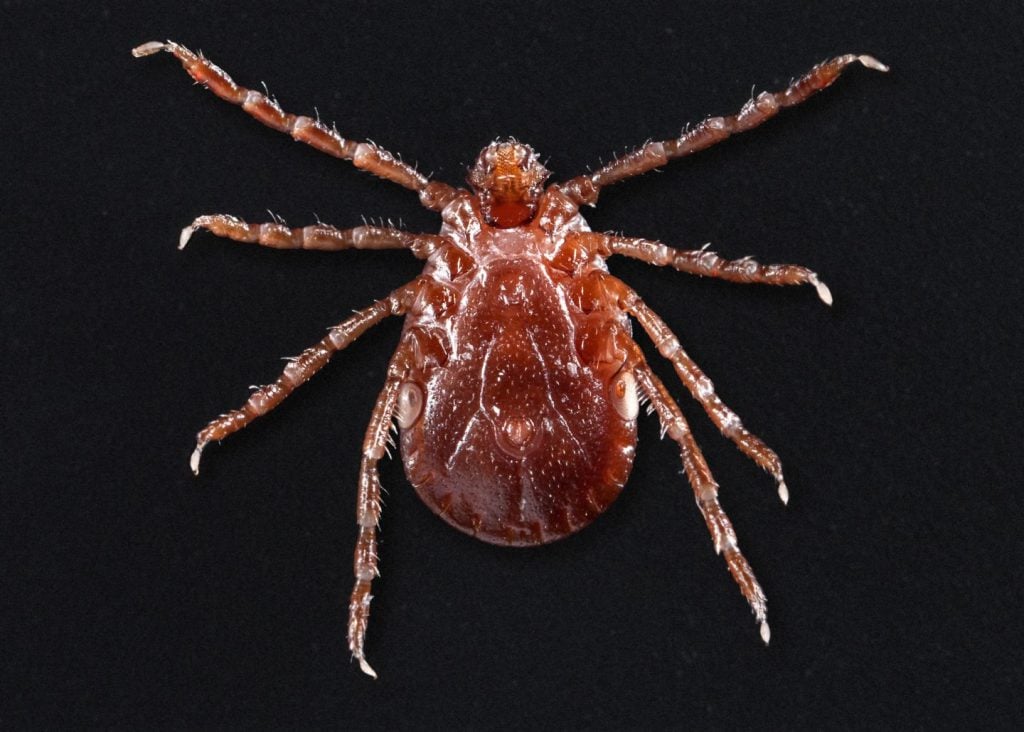
Ravenous swarms of cloned ticks have killed a fifth cow in North Carolina by exsanguination — that is, by draining it of blood. The official cause of death is acute anemia, which is typically associated with severe hemorrhaging.
Officials in North Carolina said one of the young bulls brought for testing at its Northwestern Animal Disease Diagnostic Lab had more than 1,000 ticks on it. The landowner lost four other cattle due to the same issue during 2018.
These ticks are extremely aggressive; New Jersey health investigators in 2017 reported them swiftly clambering up their legs while they investigated a tick assault on a sheep paddock.
New to USA
The ticks’ usual killing grounds are in Russia and Asia, where they are known to spread various serious diseases to humans. It’s not known how or exactly when they arrived in the U.S. So far the ones found in North America have not carried disease.
The first case identified in the U.S. was in West Virginia from a tick taken from a white-tail deer in August 2010. Since then, 67 counties in the United States have confirmed local Asian longhorned tick populations. Virginia has the most counties with 24 confirmed.
The tick can reproduce parthenogenetically (without a male) and a single fed female tick can create a localized population.
Asian longhorned ticks have been found on pets, livestock, wildlife and people.
In May came the first known case of an Asian longhorned tick biting a human in the U.S. This happened in New York state. Subsequent field studies confirmed that this tick was present in multiple geographic locations near the patient’s residence, including on manicured lawns.

In the U.S., Asian longhorned ticks have been found in Arkansas, Connecticut, Kentucky, Maryland, New Jersey, New York, North Carolina, Pennsylvania, Virginia, Tennessee and West Virginia.
Take precautions – Infectious bites
The CDC recommends that people take precautions against ticks, such as avoiding “wooded and brushy areas with high grass and leaf litter,” and to examine clothing and do a “full-body check” after being outdoors.
The clone tick is known to:
- Spread SFTSV, short for the Severe fever with thrombocytopenia syndrome virus. SFTSV is related to Heartland virus found in the US and has had reported mortality rates up to 30%.
- Transmit Rickettsia japonica, the cause of Japanese spotted fever, and Theileria orientalis, which is behind cattle theileriosis. It has also been found harboring relatives of US pathogens, including those that cause anaplasmosis, ehrlichiosis, babesiosis, and the Powassan virus.
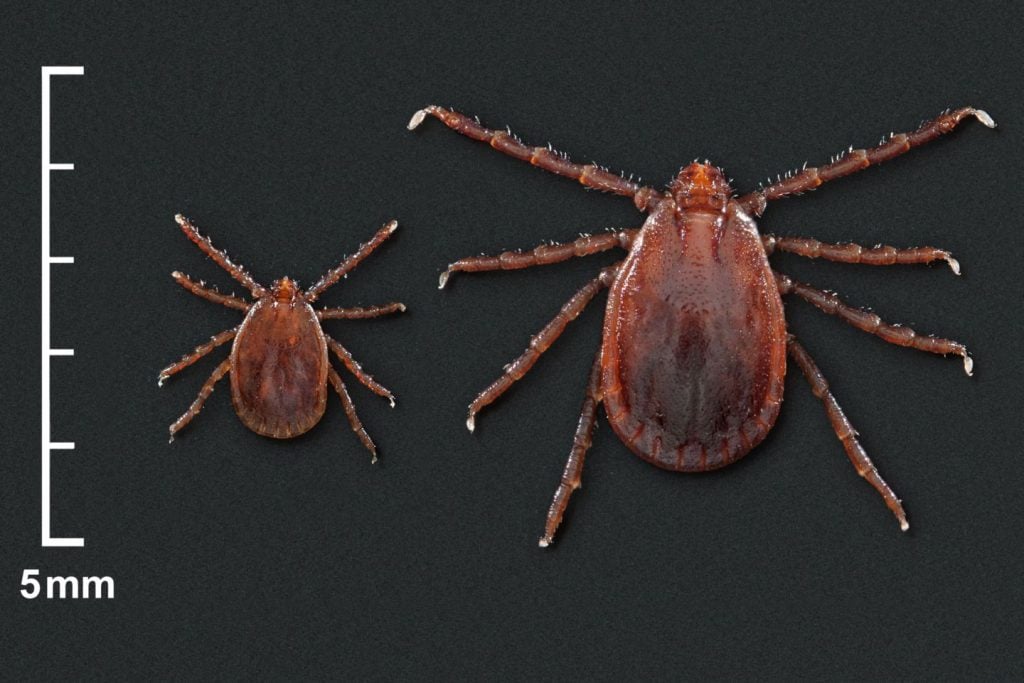
So far, health investigators haven’t found the ticks harboring any of these germs. But there’s a risk that at any point they could be introduced. And, if they are, the diseases could easily spread like wildfire through the ravenous hordes of ticks.
The 66-year-old New York man who had the first recorded H. longicorni bite was healthy before and three months after the encounter. He found the tick on his right leg after working on his lawn and brought it to a Lyme Disease Diagnostic Center, suspecting he might be at risk of Lyme disease.
Though the biting tick was disease free, when investigators went back to the man’s lawn and a nearby park, they easily found more of the ticks. More concerning, the ticks were lurking in short, sunny grass, whereas other ticks in the area tend to stick to shady, wooded areas.
The authors note that, “the findings of this investigation suggest that public health messages may need to be changed, at least in certain geographic areas, to emphasize a wider range of potential tick habitats.”
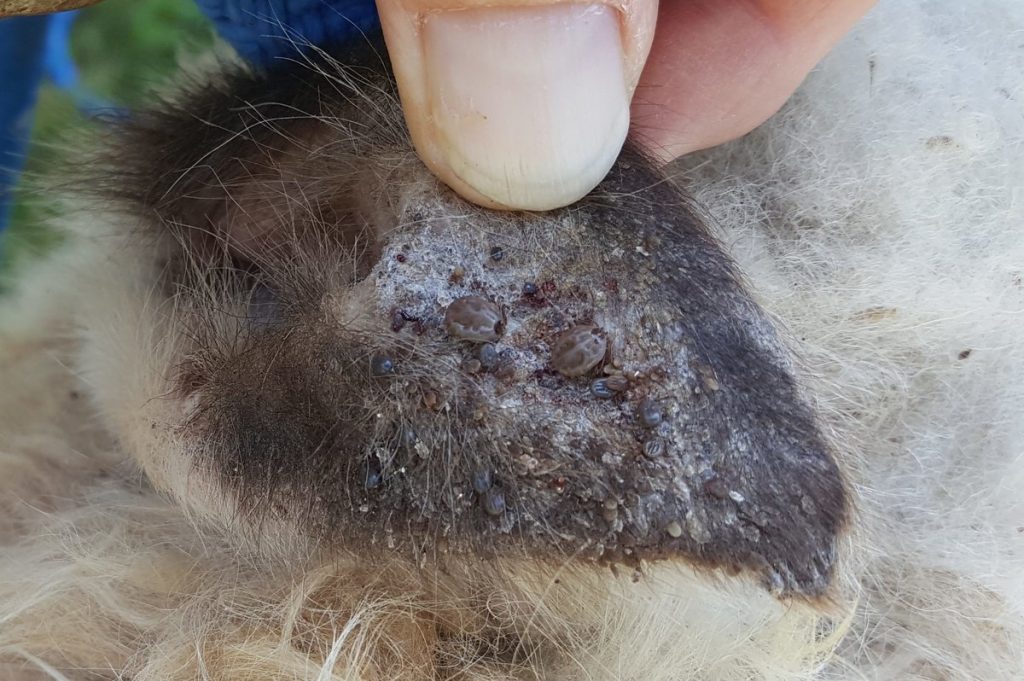
H. longicorni populations are known to exist in Arkansas, Connecticut, Kentucky, Maryland, New Jersey, New York, North Carolina, Pennsylvania, Virginia, and West Virginia.
The 2019 tick season will probably be bad. So be ready and get prepared. There are currently good products (sprays and or pills) on the market.
[NCAGR.GOV, Ars Technika, Interesting Engineering, Oregon Live]


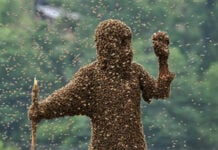
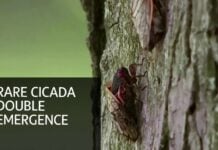






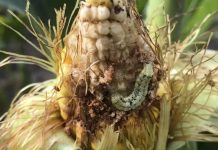

Solution: raise and release into the wild, ranches, farms and public lands Guinea Hens. Even chickens go after ticks. But Guinea Hens are ferocious tick eaters.